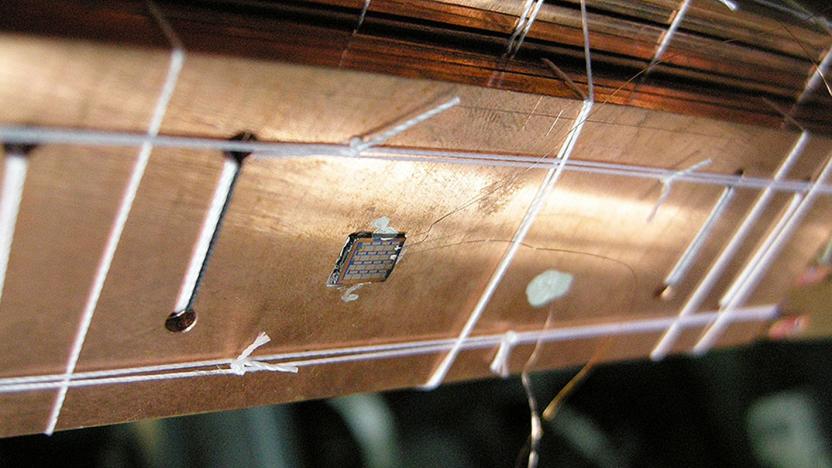nanoelectronics
Latest

World's coolest chip runs at near absolute zero
How do you find out what happens to physics near absolute zero (aka 0 kelvin), the temperature where particle motion virtually stops? Scientists at the University of Basel might have just the device to do it. They've developed a nanoelectronics chip that they can successfully cool to a record-setting, bitterly cold 2.8 millikelvin. The trick involved a clever use of magnetic fields to eliminate virtually all sources of heat.

World's smallest laser cracks open the door to THz CPU race
So you thought 100nm was about as narrow as lasers could get, huh? Well think again brother, because scientists at Norfolk State University have now demonstrated a 44nm 'spaser' that performs a laser's functions by the alternative means of surface plasmons. By using such an unorthodox technique, the researchers have been able to overcome the minimum size limitation to lasers, and they even claim spasers could be made as small as 1nm in diameter. Peeking into the (not too near) future, this could improve magnetic data storage beyond its current physical limits, and even lead to the development of optical computers that "can operate at hundreds of terahertz" -- and here you were, thinking that your brand spanking new Core i7 system with Blu-ray was future-proof.

Nanotube breakthrough creates scalable transistors
Nanotubes have certainly played their part in various forms of swank gadgetry over the years, but researchers at the University of Illinois, Lehigh University, and Purdue University seem to have upped the ante for future nanotube implementations. Their approach utilizes "dense arrays of aligned and linear nanotubes as a thin-film semiconductor material suitable for integration into electronic devices," which essentially means that the arrays can be transferred into devices where silicon isn't entirely comfortable, such as "flexible displays, structural health monitors, and heads-up displays." Interestingly, the creators aren't expecting their discovery to overtake silicon, but they did mention that the linear arrays could be "added to a silicon chip and exploited for particular purposes, such as higher speed operation, higher power capacity, and linear behavior for enhanced functionality." Sounds like these gurus are just the type Intel would be scouting right about now, eh?[Via TechnologyReview]

